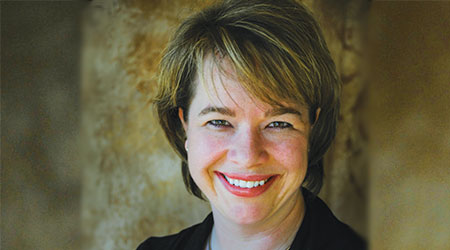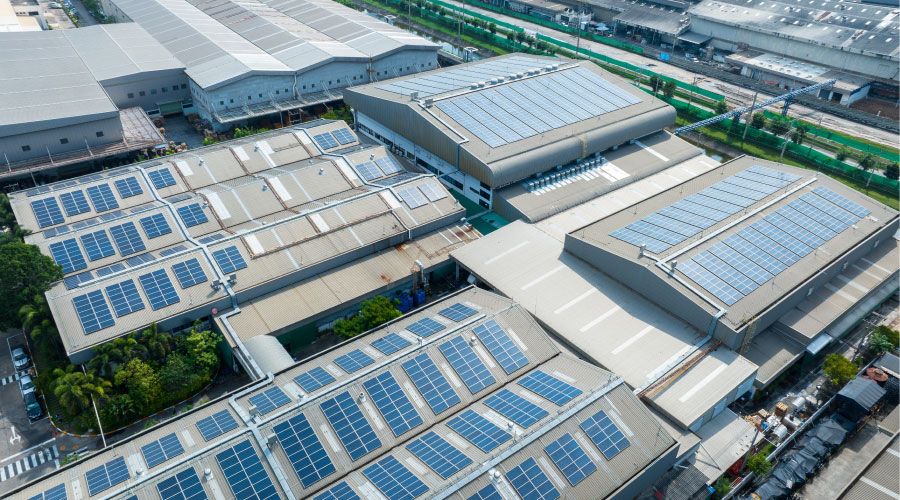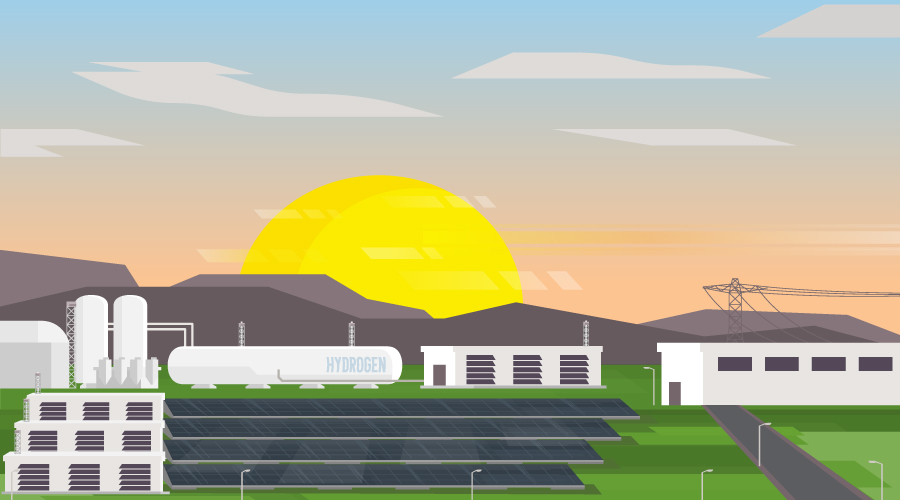Ventilation and Filtration: A Systemic Strategy for Healthier Buildings
Occupant health joins energy efficiency and cost-effective operation as long-term goals for managers.
By Laurie A. Gilmer, P.E.
Saving energy and reducing costs without compromising operational outcomes. These goals are central to the activities and priorities of maintenance and engineering managers. Over the last 15 years, they have spent a great deal of time on projects, initiatives, and tasks that are designed to achieve these goals. In doing so, managers have tended to focus on technologies, such as energy management systems, high-efficiency HVAC equipment, occupancy sensors, and LED lighting.
The variable in these efforts is the human factor — building occupants — that managers can't control. So they have encouraged responsible occupant behaviors, such as turning off lights, turning off or unplugging equipment that is not in use, and closing windows and doors when the air conditioning is running.
But what happens when building occupants are gone? Until March 2020, managers had only been able to theorize about that question. The pandemic has provided a unique opportunity to look at changes in buildings, insight that might help them run buildings more efficiently and effectively. What happens when they are running and only minimally occupied?
The window of insight doesn't cover just a weekend or a few days. Managers have months of data. What managers are learning is that when people went to remote working arrangements, energy use did indeed decrease in many buildings. What has been surprising is that energy use did not go down proportionally to occupancy.
In other words, a building that dropped to 30 percent occupancy did not reduce its energy consumption to 30 percent of its pre-COVID consumption. It more likely dropped to 60-90 percent of its pre-COVID consumption. This difference tells us something about the way managers operate buildings, and it points out opportunities to operate buildings better.
Hurdles and opportunities
Buildings must consume a minimum amount of energy to perform even the most basic functions, such as keeping the temperature at setpoint during occupied hours. Many buildings do not have the luxury of a high degree of variability in system operation, so optimizing run time and capacity can be a challenge. These are the first hurdles, but managers need to address others.
Occupants and energy consumption. Even though building energy and occupancy haven't tracked proportionally with one another during the pandemic, it is still apparent that fewer people in a building translates to energy reduction. Part of the drop is attributable to the factors people add to a building: their heating and cooling needs, their use of energy-consuming equipment, and the addition of their plug-in devices.
They also bring behaviors that can help or hinder a building’s operation. A manager once joked with me that he didn't need more sensors in his building because he had several hundred walking around every day whom he could count on to let him know if a problem arose. As managers look to accommodate a return of people to buildings, whether fully or in some hybrid arrangement, they have an opportunity to instill good behavioral practices in these people.
Building operations. If a building is minimally occupied but its energy use doesn't go down much, why might that be? Technicians can check these areas:
- Setpoints. Is the building using setbacks for unoccupied operating hours? Check the temperature setpoints and schedules, both occupied and unoccupied.
- Equipment loads. Is equipment plugged in that should be shutting down or going into sleep mode that isn't? Check copiers, printers, audio-visual systems, televisions, and individual plug-in heaters. It is surprising the amount of power these systems can draw when not properly shut down. They also add to the building's heat load.
- Lighting. Lighting accounts for a significant portion of a building's energy use. Are the lights turned off in areas that are not occupied? Check lighting during unoccupied hours.
- Economizer dampers. Are they opening and closing correctly? An economizer damper that is stuck open lets in more outside air than the system is calling for and can overburden the heating and cooling system, as well as waste energy by cooling more outside air than needed.
- Simultaneous heating and cooling. Are HVAC systems calling for both heating and cooling when they should not be? This situation can happen for a number of reasons. A valve could be stuck, a sensor could be mis-reporting, or a damper could be broken.
- System controls. One lesson for managers over the last year and a half is that control systems can serve a significant role in planning and preparedness. More advanced systems can help technicians dial back system setpoints and schedules so that the impact of scaling back operations is part of a plan, not a reaction to an event.
In simpler systems, technicians still can employ setback modes to minimize system operations commensurate with occupied status and needs. That is the key: tuning systems and responses — large or small, comprehensive or basic — to business needs. It's what managers are responsible for doing.
Spotlight: Ventilation and IAQ
Ventilation or outside air have been huge topics of discussion during the pandemic. A few months ago, I was hearing about companies increasing ventilation, running systems 24/7, and regularly purging building air. These tactics were attempts to help improve indoor air quality (IAQ) and reduce the potential risk of problematic bio build-up. But the tactics came at a cost because buildings’ energy bills spiked with the increased demand to condition and treat air. Was that a reasonable approach? It’s a matter of perspective.
Before the pandemic, managers thought of outside air primarily as a necessary and important component of IAQ, but because it is costly to condition, managers typically have minimized outside air levels to meet code requirements.
The pandemic has caused managers to rethink outside air, looking at it instead as part of a risk management approach to protecting human health. Bringing in more outside air can help dilute concentrations of indoor air pollutants. In a time where managers and occupants alike are concerned about air-to-air transmission of the coronavirus, increased ventilation that helps reduce its potential concentration is a critical consideration.
Managers also must face the real and practical consideration that not all systems are designed to handle increases in outside air. In these cases, adding too much can outstrip a system’s ability to adequately condition the air. So managers must find a balance between health, cost, and system capability.
This is where filtration plays a key role. Emphasis has been placed on improving air filtration to a minimum efficiency reporting value (MERV) of 13. Just as too much outside air can overwhelm a system, too much filtration can, as well.
But that potential challenge doesn’t mean managers should stop at the system. What they have learned is that they can maximize filtration to the point at which systems can handle it and then supplement with local filtration and air cleaners.
In fact, ASHRAE's Core Recommendations for Reducing Airborne Infectious Aerosol Exposure, issued earlier this year, recommends just that. ASHRAE recommends working to achieve a MERV 13 level of performance while also recognizing the need to manage energy use.
What lies ahead
In the last 18 months, managers have been through many permutations of what they can do, what they should do, and what actually works in facilities. It hasn't been easy, and much of it has felt like trial and error. One top-of-mind goal for managers is maintaining a healthy environment for building occupants. That goal has always been important, but during the pandemic, it has become critical.
Ventilation and air filtration, more than most other factors, affect the quality of the interior environment where people spend so much of their time, and the related cost of operations is still very important. After all, it’s part of an organization’s bottom line. Managers also have come to understand that something as short term as a monthly energy bill needs to be looked at in the context of the cost of long-term health and welfare of people and ways to keep them safe.
The core charge of saving energy and reducing costs without compromising operational outcomes hasn't changed. Perhaps the most important lesson for managers through all of this is to value a third element: health. As managers move forward, they need to balance financial constraints and resource management with the health of building occupants.
Laurie Gilmer is vice president and chief operating officer of Facility Engineering Associates. She is the first vice chair of IFMA’s board of directors, serves as IFMA's liaison to ASHRAE's Epidemic Task Force, and serves on the National Visiting Committee of Building Efficiency for a Sustainable Tomorrow (BEST) Center.
Related Topics:












